
时间:2022-07-11 12:07:26来源:网络整理
XK06-015-00688
水冷式冷水机
水(地)源热泵机组
安装手册
在安装和使用产品之前,请详细阅读和使用
说明,并保留它们以备将来参考。
北京金万众空调制冷设备有限公司
北京京东空调制冷设备有限公司
目录
1.概览(2)
2.结构特点和工作原理(3)
3.性能参数(4)
4.开箱验货(37)
5.运输和储存(38)
6.单元安装(38)
7.准备开机(44)
8.电控操作说明………………………………………………
9.维护………………………………………………………………
10.机组维护…………………………………………………………
11.售后服务…………………………………………………………
1 概述
1. 1 产品特点
金万众水冷式冷水机组(热泵)机组,主要零部件均选用世界名牌产品,采用现代化流水线生产,并按照ISO9001质量体系进行严格的质量控制和管理,使产品性能优良,效率高。设计严格按照国家标准(GB/T18430.1-2007、GB/T19409)
1)机组操作系统采用进口可编程控制器控制。
2)机组设有压缩机高低压自动保护装置、过流保护装置、过热保护装置。 3)机组配有目标流量开关,当流量过低时自动进入保护状态。 4)机组出水温度过低时,可自动保护防冻低温程序。
1.2 型号说明
图1宿主模型的组成及其含义
1. 3 主要用途及适用范围
我公司水冷冷冻水(热泵)机组适用于宾馆、商场、写字楼、医院、高档工厂、影剧院、体育场馆等场所的中央空调系统冷源,并可为纺织、化工、电子、国防、科研等部门的工艺流程提供低温水。水冷机组可与风机盘管、组合式空调、柜式空调等末端换热设备灵活组成各种中央空调系统。由于本产品采用电力驱动制冷,其能效比在4.5以上,节能效果非常显着。
2.结构特点和工作原理
2.1 单元结构
机组由三个系统组成:制冷系统(通常是氟系统)、水系统和电气系统。
2.1.1个制冷系统
制冷系统由压缩机、冷凝器、蒸发器、膨胀阀等部件组成。压缩机为半封闭螺杆式,配备多种安全装置。
冷凝器和蒸发器均采用我公司开发生产的管壳式换热器,结构紧凑,占地面积小,安装布置方便;传热系数高,换热效果好;可拆卸结构,便于维护和清洁。换热器具有完善的自我保护装置,大大提高了整机的安全性。
机组使用的膨胀阀、干燥过滤器、显示镜等配件均为国际知名品牌产品,保证系统高效可靠运行。
2.1.2 电气系统
机组采用可编程控制器自动完成机组的运行和保护功能。我公司选用的可编程控制器具有体积小、重量轻、可靠性高、存储容量大、控制点多等优点。此外,控制器独有的模拟量输入扩展模块,大大提高了系统的控制能力。精确。可编程控制器可根据用户要求配备专用通讯接口,实现机组的远程控制和集中实时控制,使机组与楼宇自控系统灵活配合,实现多定向自动智能控制。
2.2工作原理
2.2.1 冷水机组制冷时,压缩机将制冷剂回气加压加热,然后送入冷凝器,由冷却水冷却高温高压加压制冷剂气体冷却,冷凝成液体;冷却水通过冷却塔将冷凝热散发到外部环境。冷却后的制冷剂液体通过膨胀阀节流后成为低温低压的制冷剂液体,然后进入蒸发器与冷冻水进行热交换,热交换后的制冷剂气体进入压缩机。从而形成一个连续的工作循环。蒸发器产生的低温冷冻水通过循环水泵输送至空调末端设备或工艺换热设备供用户使用。
2.2.2水(地)源热泵机组制冷制热其制冷剂循环系统与冷水机相同,区别在于水系统的循环,通过循环水系统 在制冷和制热之间切换。制冷时,使用侧的进出口管与蒸发器的进出口连接,提供制冷;冷凝器的进出水与水源侧相连,将热量释放到水(地)源。制热时,使用侧的进出水管(由阀门切换)与冷凝器的进出口连接,实现供热;蒸发器的进出水管(由阀门切换)与水(地)源侧相连,从中提取热量。
3.机组主要技术参数
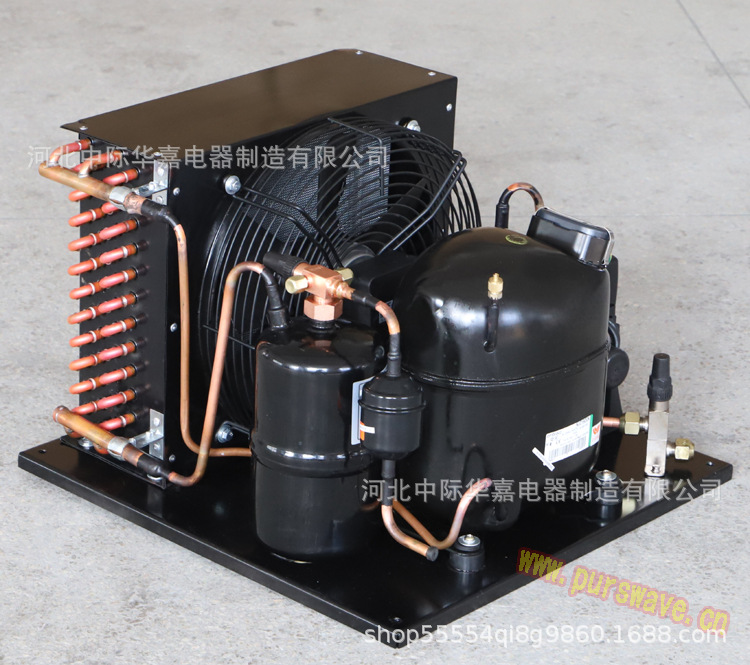
3.1个参数列表
MLSB系列水冷螺杆机组性能参数表(1)
3.2台机组运行条件及运行范围
3.2.1台水冷式冷水机组【包括MLSB(M和A)和MLSC系列】
标称冷却工况:冷冻水入口温度12℃,出口温度7℃;
冷却水进水温度30℃,出水温度35℃。
机组 本机组适用环境温度范围为:制冷21℃±1℃~43℃±1℃。
冷却水入口温度范围:19-33℃,冷冻水出口温度范围5-15℃。
3.2.2台水源热泵机组
1)MSRB (M)、MSRC 和 H 系列
标称冷却工况:放热侧进水温度20℃,放热侧出水温度30℃
使用侧进水温度12℃,使用侧出水温度7℃
标称制热工况:使用侧进水温度40℃,使用侧出水温度45℃
热源水入口温度15℃,热源水出口温度7℃
制冷工况要求冷凝器出水侧进水温度范围19-33℃;供暖条件要求热源侧进水温度范围15-21℃
2)MSRBA 和 MSRBAH 系列
标称冷却工况:放热侧进水温度20℃,放热侧出水温度30℃
使用侧进水温度12℃,使用侧出水温度7℃
公称制热工况:使用侧进水温度50℃,使用侧出水温度55℃
热源水入口温度15℃,热源水出口温度7℃
制冷工况要求冷凝器出水侧进水温度范围19-33℃;供暖条件要求热源侧进水温度范围15-21℃
3.2.3台地源热泵机组(MDRB和MDRC系列)
标称冷却条件:放热侧进出水温度为25℃/30℃;
使用侧面进出水温度12℃/7℃。
标称加热工况:热源侧进出水温度0℃/-3.2℃;
使用侧进出水温度40.7℃/ 45℃。
制冷工况要求冷凝器出水侧进水温度范围19-33℃;供暖条件要求热源侧进水温度范围-5-25℃
3.2.4 综合
各机组压力(包括蒸发器和冷凝器)≤1.0MPa,如有特殊要求请在订货时注明。
★表示本机电源为2端进线
▲表示本机电源为4端进线
●表示本机供电为6端进线
超出本机使用范围造成的本机损坏不在保修范围内。
注意:本公司保留修改产品设计的权利。
4.单元开箱检查
4.1开箱时请注意
1)检查盒子是否有损坏、泄漏或湿点。
2)开箱时需要仔细查看设备和配件清单。如有短缺,您必须在5个工作日内以书面形式向我司报告,否则视为完整。
4.2 查看盒子里的内容
1)根据装箱单检查所附文件是否齐全。
2)根据随附文件核对设备型号和规格。
3)检查主机及其组件是否损坏或腐蚀。
4)设备内充注的制冷剂是否泄漏。
开箱检查后,设备应采取保护措施。不宜过早或随意拆开包装,以免损坏设备。
5.单位运输和储存
5.1注意交通
1)主机设备在装卸时应吊装,严禁碰撞、挤压或撬动主机内所有部件,尤其是机组氟系统管路部分。
2)在运输过程中必须牢牢固定设备。运输过程中小心驾驶,避免剧烈振动。
5.2 设备安装前应存放在仓库或有遮盖的地方
如果机组长期存放(超过一年),应每季度清洁一次机组外表面;仓库存放时,应保持内部干燥、清洁、通风。
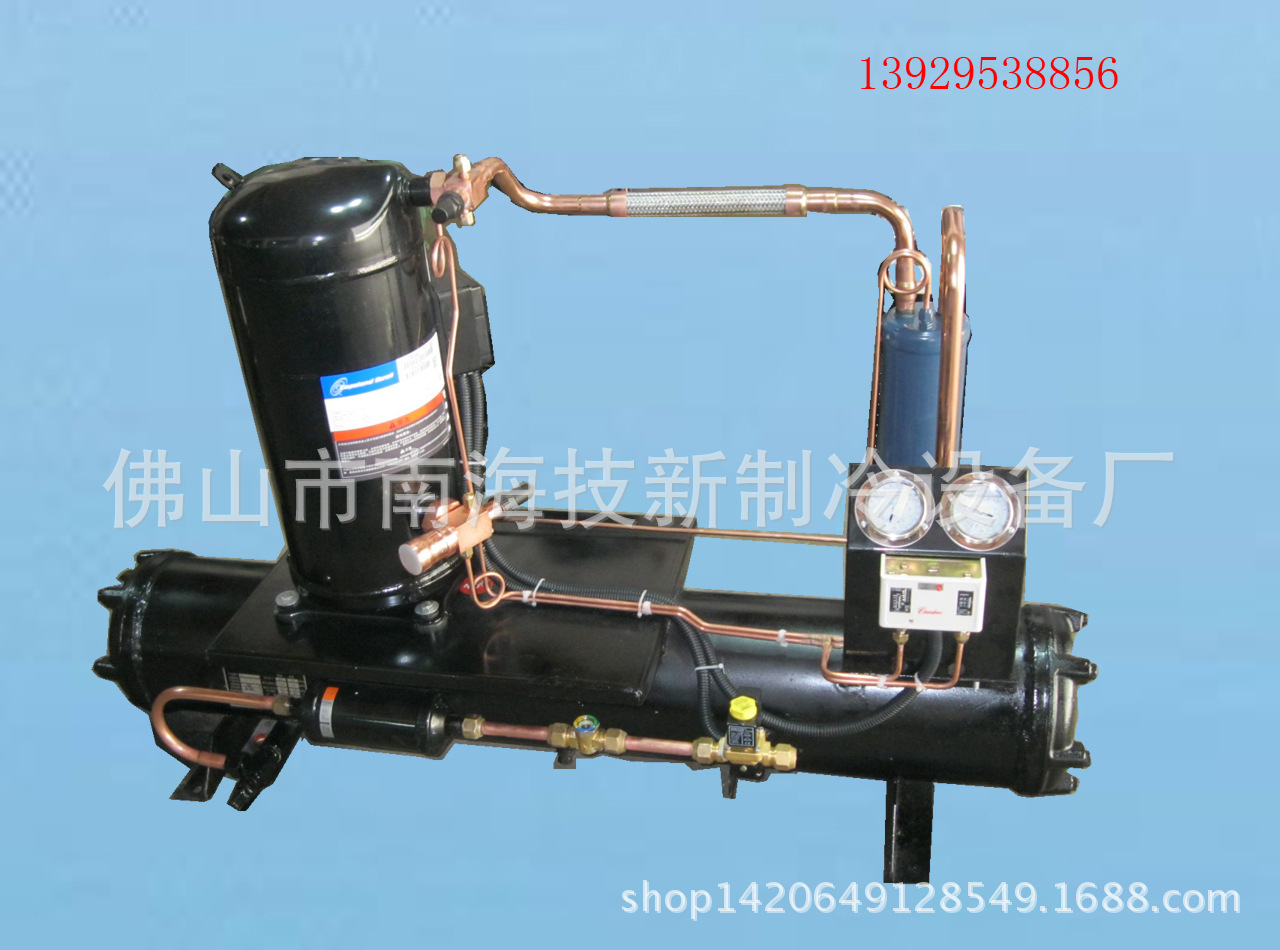
注意:机组的存放条件必须满足防雨、防尘、防晒、防潮的要求。
6.单元安装
6.1单元吊装定位
6.1.1个安装位置
1)机组周围及上方应预留足够空间进行操作维护;单元两端应留3.0m,两边不小于
1.0米空间,便于维修冷凝器和蒸发器时的拆装(也可以使用门孔或其他合适的开口)。
2)该单元可以安装在建筑物的地面或楼层。基础表面必须平整,并能承受 1.5 倍的机组重量。本机应远离对安静性要求较高的地方。
3)本机应安装在防雨、防水、防尘、防潮、防日晒的地方,并远离(10米以上)电磁干扰设备或
设施(如变频器、变压器、高压线等)。如果安装在室内,室内温度应在 5°C 至 45°C 范围内。比如
如果通风条件差,应安装通风设备。
注意:机房应防水防潮,并安装良好的照明设施。
6.1.2吊装
1)使用吊车起吊时,起重绳应与机组吊装孔连接牢固。吊绳不得与电控箱、制冷剂管路及机组其他辅助部件接触。充分加固的支撑梁。
2)带框架的单元采用拖拉方式或滚动方式移动时,只能在框架上或滑橇上使用,滚轮间距不得大于200mm 无框架结构的单元不得拖拉或滚动移动。
3)移动机组时,倾斜角度不得超过15°。
6.1.3 定位
机组就位后,拆下滑轨,垫平机架,用水平仪校准水平仪,用螺栓固定在基础上。
6.2个管道连接
(a) 冷却器
传说
(b) 水源热泵机组
图片
例子
(b)地源热泵机组
图3管道连接示意图
注意:
1)两台或多台机组并联运行时,应保持水平衡,避免偏流。
2)机组配管应符合当地管道工程规范要求,但配管重量不得由机组自行承担。 3)弯头、三通、阀门等附件会增加压降,所以配管要简单,阀门要安装在容易操作的地方。
进出水管应配备高压软管,以减少振动和噪音。
4)冷凝器和蒸发器的水管应安装温度计和水压表,冷却水和冷冻水出口(或入口)应设计有水流
开关(标准配置)。进出水口需安装排水阀。如有必要,可打开排水阀,将冷凝器和蒸发器中储存的水排出。
5) 配水管道最高位置应设置排气装置大气源制热机组,最低位置应设置排水阀。 6) 循环水泵应安装在冷凝器和蒸发器的进口处。
7) 防止空气混入管道。水系统管道的吸入口和排放口应保持在水面以下,以防止泵吸入空气
或者在排水时将空气混入水中。
8) 机组进水口必须配备滤水器。滤水器规格为16-20目/英寸的不锈钢丝网。水路清洗
之后,应移除、清洁并检查过滤器。如果损坏,则应更换。滤水器必须安装在水平管道上,水流方向与滤器上箭头方向一致。水系统清洗问题造成的机组损坏不在机器上
包含团体保修。
6.2.1 冷凝器管道连接
供水管路应尽量短,管路规格应根据泵的有效压头确定。使用冷却塔时,应使用柔性接头以减少振动。
由于每个制冷回路都使用一个冷凝器,所有冷凝器水路的入口和出口在接管时应分别并联。 6.2.2蒸发器管道连接
只需将蒸发器的进水口和出水口连接到系统管道上即可。流量开关应安装在靠近机组的出水管处,直管段长度不应小于管径的10倍。蒸发器采用柔性闭孔塑料板绝缘,水蒸气不能穿透板表面并在闭孔内或蒸发器筒体上冷凝。因此,保温层本身就是防潮层,保温材料的韧性好,不需要覆盖保护层。
6.3 个电气接线连接
1)电线必须符合国家电气规范和当地相关法规的要求。
2)配电箱有连接地线的措施,用户提供的电源必须有此措施。
3)机组工作电源标称AC380V±10%(342~418),三相,50Hz,外接电源必须符合电气特性4)最大允许相电压不平衡为2%,大于2%不得开机,否则视为操作不当,不予覆盖本产品的保修。
7 单元首次启动的准备工作
7.1 用户电源与主机电箱的连接操作
本机出厂前已完成内部接线及测试。用户需将主电源引至机组电源端子
1)请先打开机组电箱门,取下机组主电源端子上的有机玻璃挡板。
2)请将用户端的三相五线电源线连接到机组的专用端子上。 (特殊端子包括:三相主电源端子、零线端子、地线端子,部分型号单元从电箱左右两侧进线,特殊端子有两组);
注意:我们的主机产品的电气系统配备了电源保护器。用户单元上电时,若出现三线电源缺相、错相(反相序)、过压或欠压故障,电源保护当电源保护器进入保护状态时,红灯亮on 电源保护器打开;供电正常时,电源保护器上的绿灯亮。上电后延时18秒连接电源保护器。
警告:反相时,请调整电源线进入电源箱的相线顺序,但严禁更改主机电控箱内的线路。
3)电源线固定好后,请打开(ON)主电箱内所有控制电路的电源空气开关,通电24小时(通电后机组会自动预热) on),然后由专业人员在工厂调试安装。
7.用户水系统与主机进出水管的连接操作
1)用户水系统安装完毕后,整个水系统管网应通过旁路回路至少清洗两次,管道过滤器应清洗,如
如有损坏,请更换。连接主机水管前,请确保水系统清洁。
注意:连接用户水系统和主机水系统的进水管必须配备16-20目/英寸的滤水器。
2)主机进出水管接入用户水系统后,请将水通到用户并排气。
注意:用户水系统的给回水应与主机进出水口对应,严禁接反。
供水线尽量短,线长尽量短
不符合接头规格,使用冷却塔时
选择柔性接头以减少振动时
通过。
因为每个冷却回路使用一个
只有冷凝器,所以应该全部接管
冷凝器水道的进出口分别并联。
并在水管中安装流量开关
(参见流量开关安装示意图)。
8、电控操作说明
8.1 电器元件
本机组电气控制部分采用德国著名公司西门子PLC控制器。机组操作面板上有以下设备:TD400操作器、急停按钮、复位按钮、故障指示灯。多压机组面板上有手动/自动开关,冷/热转换开关在单压机组面板上,多压机组电气箱内。
8.2 使用说明
8.2.1 开机时,先确定机组的手动/自动(多按)、制冷/制热运行状态,然后给PLC上电,保证PLC处于运行状态;
8.2.1
在自动状态下,按“F1”键,按键依次开机;在手动状态下,按对应的F键切换对应的按键;请注意,印刷机必须一个接一个地启动。 .
注意:手动状态是为技术人员调试设备准备的。不建议用户自行使用手动状态!
8.2.2关闭时,在自动状态下按“F2”键;
在手动状态下,按对应的F键关闭对应的按键。
8.2.3 保护要求:当各模块出现高压、低压故障或压缩机过载故障时,机组几秒后报警,故障指示灯闪烁,相应的压缩机将停止。自动复位后,按复位键取消报警信号。发生过载故障时,故障消失后,先按控制电箱内的红色复位按钮,再按电箱面板上的复位按钮,即可消除报警信号,自检后压力机自动启动。保护时间。当出现低温故障或目标流量故障时,所有机组都将停机。
压机启停间隔自保存时间为7分钟。 1小时内压机启停次数不得超过6次。
8.2.4 温度能量调节控制
冷藏:
(1)螺杆式压缩机:首次启动时:当出水温度高于设定温度2℃时,经过自保护时间后依次启动压缩机。三(包括三个)启动间隔3分钟。
当出水温度低于设定温度10秒后,压缩机以50%运行;当温度低于设定温度0.5℃并持续10秒时,会停止一台压缩机,因为压缩机需要卸载停机,所以需要25%的运行时间停止一个一段的时间。如果出水温度在运行时间的 25% 内上升,并且高于设定温度 0. 5℃或更低,则机组将返回 50% 运行状态。若温度持续升高至设定温度2℃以上,则满载运行;如果压机停机后水温升高,则只有温度高于设定温度2.5度才能重新启动压机;当出水温度低于设定温度[email protected]℃时,二压机运行50%。当温度低于设定温度1.5℃时,卸载停机一段时间。两台机组均停机后,待出水温度升高至设定温度高于设定温度2℃时,依次启动。 (对于单机头,四级能量调节对应:25%、50%、75%、100%;对于四机头,四级能量调节对应:a 一台压缩机运行,两台压缩机运行,三台压缩机运行,四台压缩机运行。)
(2)活塞式压缩机:首次开机时,当出水温度高于设定温度2℃时,压缩机自启动后依次开机。保护时间,两台压缩机间隔1分钟开机。
当出水温度低于设定温度时,停止1组压机;当低于设定温度0.5℃时,停止第二组压力机;低于设定温度1.0℃时,分阶段停止第三组压力机。出水温度下降后回升到(设定+2)℃,开启1组压机;高于(设定+2.5)℃,开启2组压机) ;高At (set +3)℃,开3组压机。
加热:
(1)第一次启动时:当出水温度低于设定温度2℃时大气源制热机组,压缩机自保护时间后依次启动。两次启动的时间间隔压缩机为 1 分钟。(包括三台)启动之间为 3 分钟。
当出水温度高于设定温度10秒后,压缩机以50%运行;当温度高于设定温度0.5℃持续10秒时,将停止一台压缩机,因为压缩机需要卸载停机,所以需要运行25%一段时间并关闭。在25%运行时间内,如果出水温度下降并低于设定温度0.5℃,机组将返回50%运行状态。如果温度继续下降到设定温度,当设定温度在2℃以上时,将满负荷运行;如果压缩机停机后水温下降,只有温度低于设定温度2.5℃
开,本机可以重新启动;当出水温度高于设定温度1.0℃时,二压机运行50%,高于设定温度1.5℃后卸荷停机一段时间,当两台机组停机,待出水温度降至设定温度以下2℃后依次启动。 (单机头四级能量调节对应:25%、50%、75%、100%;四机头四级能量调节对应:一台压缩机运行,两台压缩机运行,三台压缩机运行,四台压缩机运行。)
(2)活塞式压缩机:首次开机时,当出水温度低于设定温度2℃时,压缩机自启动后依次开机。保护时间,两台压缩机间隔1分钟开机,3次(含3次)启动间隔3分钟,当出水温度高于设定温度时,停止第一组压机;当温度达到高于设定温度0.5℃,停止第二组压力机;高于设定温度当固定温度1.0℃,分阶段停止第三组压力机. 当出水温度升高后回落到(set-2)℃,启动一组压机;回到(set)Set-2.5)℃开2台压机;低于(set-3)℃开3台压机。
8.3电箱面板操作说明
主机上电后,TD400会显示信息,输入
进入待机状态;机组运行时,通过“急停”按钮,
在不关机或紧急情况下出现故障时强制关闭主机
操作;当机组出现故障时,“故障指示灯”会亮
闪烁,警告。
8.4 TD400液晶操作说明:
8.4.1 各按键功能介绍:
1. F1:自动开机键。
2. F2:自动关机键。
3. F3(7):手动按1(3)键。
4. F4(8):手动关闭按下1(3)键。
5. F5(9):手动按2(4)键。
6. F6(10):手动关闭按2(4)键。
8.4.2 设置:
(1)设置水温值
注意设定值的范围是7°C--12°C (35°C--45°C) 超出范围设定值无效。
(2)设置水温修正值
Due to the error of PT100 itself, the temperature measured by the sensor may not be consistent with the actual temperature. If you need to calibrate
Positive, enter the correction value, and finally display the water temperature as the difference between the temperature measured by the sensor and the input correction value
Value. The initial default temperature correction value is 0.
8.4.3 Menu Operation:
(1)In the default display mode, use ESC to access the menu level. Then press ENTER to select a menu item to access other menus or functions.
(2) Operation of setting value: Press ESC to enter menu selection, use ▲, ▼ keys to select parameter setting, press ENTER to enter setting, and then set the setting item with the cursor, Use the ▲ and ▼ keys to change the input value of the required data, and then press the ENTER key to confirm the setting.
(3)Fault check: When there is a fault, the screen will have a ! flashing, press ESC until the display alarm menu appears, press ENTER to view the current fault.
(4)Check the unit status: press ESC to enter the menu selection, use the ▲, ▼ keys to select the unit status, and press ENTER to enter. (5)Set the backlight of the TD400C: press ESC to enter the menu selection, Select Diagnostics menu
The screen saver time for the TD400C can be configured in the TD400C Settings menu:
? 1 to 59 minutes in 1 minute increments (default 10 minutes)
? 1 hour, 2 hours, 4 hours and 8 hours
Notes on the operation of the backlight
Notes on backlighting are listed below:
?Turn on the backlight display light, the backlight will be turned on for a period of time, which can be configured in the TD setup menu. ?If the current backlight is off and any key is pressed, the first key action will turn on the backlight without executing the function of the key. To perform the function of this key, the key must be pressed again.
? If there is an alarm that needs to be acknowledged in the TD400C (alarm information flashes) and the alarm is activated, the backlight display will only be turned on when the alarm is acknowledged.
? The life of the TD400 can be extended by turning off the backlight when the display is not needed.
Do not change other parameters in the TD400 setup menu at will!
9、Preventive Maintenance
It is the user's responsibility to provide the necessary daily, monthly and annual maintenance for the system. During the warranty period, if the user fails due to improper maintenance, Jinwanzhong will not bear the maintenance cost. for any motion system. It is important to perform regular maintenance and inspection of its components to ensure operation at peak efficiency. Therefore, the maintenance work should be carried out according to the following requirements.
1.Compressor
一个。 When the oil pressure difference of the screw compressor is ≥3.5bar, the oil filter should be replaced.
b. Oil change——The lubricating oil in the compressor should be replaced once a year, if the oil becomes black and thick, it should be replaced in time. If the oil is checked and analyzed quarterly, and the analysis shows that the oil is OK, it is not necessary to change it every year.
c。 Measure the compressor windings annually to check for damage to the windings.
2.Electrical Installations - Always pay careful attention to operating voltage, current and phase balance. Check for poor contact, oxidized contacts, foreign matter, and other problems caused by loose terminals.
3.Control and protection devices - do not arbitrarily adjust the setting value, the setting value should be completed by professional technicians.
4.Temperature sensor——: Check the oil or butter where the temperature sensor is placed before use every season and every two months, and replenish it in time if there is insufficient. Otherwise, the temperature detection will be inaccurate, resulting in serious damage to the unit.
5.Leak detection
The unit should be leak checked quarterly and any leaks found should be repaired immediately.
6.Cleaning
Much of the maintenance of both appliances consists in keeping the water side clean.
Cooling towers, closed water systems often use untreated water and can experience the following problems: scaling, corrosion or rust, sludge and algae production. Therefore, for the sake of the interests of users and for the normal, energy-saving and efficient operation of the unit, the heat exchanger needs to be cleaned in time:
一个。 The condenser tube bundle should be cleaned once a year or more frequently if necessary. When the temperature difference between the condensing temperature of the condenser and the outlet water temperature is higher than the temperature difference measured by the new unit 2.2℃, this indicates that The condenser tube bundle needs cleaning
b. Under normal circumstances, the tube bundle of the evaporator does not need to be cleaned, but if the temperature difference between the chilled water and the refrigerant rises slowly during the operating season, it indicates that the tube bundle of the evaporator is fouled and needs to be cleaned, but it needs to be checked. Whether the unit refrigerant leaks.
7.Oil return system
The filter drier of the oil return system of the flooded unit should be replaced every six months. If the oil return system fails, it should be replaced immediately.
8.Long downtime in winter
When shutting down in winter, clean the inside and outside of the fuselage, keep the fuselage dry, pump the refrigerant into the condenser, and close the compressor exhaust valve and liquid outlet shut-off valve. To prevent dust and other external environmental influences, during shutdown The unit should be covered to drain all the water in the evaporator, condenser and water pipes to prevent freezing in the cold winter. It is best to inject antifreeze into the throat.
9.Initial startup: After any prolonged shutdown, the following preparations must be made when the unit is restarted:
一个。 Thoroughly check and clean the unit, especially whether the oil in the temperature sensor probe casing is sufficient, and it must be supplemented if it is insufficient.
b. Clean the water pipes.
c。 Check water pumps, cooling towers and gate valves.
d。 Tighten all wire connectors.
e。 Check the water system filter.
f。 Clean the dust in the electrical box.
Note: When the main power switch has been turned off for more than 8 hours, the power must be turned on before the unit starts again to allow the compressor to warm up for more than 24 hours before it can be turned on.
Parts replacement
Due to the optimized and matching design of the unit options, the parts to be replaced should be the same as the original models, and do not replace any different parts casually. If necessary, please inquire with our company. For details, see the "Consumable Parts List".
Details of wearing parts of water-cooled chiller (water source heat pump) unit
Water flow switch:
Each unit has two water flow switches, which are respectively installed on the return pipes of the condenser and evaporator. The purpose of this device is to shut down the unit in case the flow of cooling water or chilled water is interrupted or the flow of water is insufficient. For installation, the user shall provide a one-inch female pipe thread coupling.
Fuse:
The fuse type of the control circuit is RT18-32, and the fuse current is 5A.
Safety valve:
The safety valve is a safety relief device, which plays a role in safety protection once the system fails. The throat diameter of the safety valve is not less than 7mm, and regular inspection is required.
Filter drier:
The function of the filter drier is to absorb moisture, acid and impurities in the system. When the sight glass is discolored, it should be replaced. The filter element model of the drying filter is A-D48 of ALCO Company of the United States. Specific installation method: start the compressor, close the liquid circuit maintenance valve, run the compressor for about 1 minute, when the pressure of the low pressure gauge drops to 2 atmospheres, close the compressor return valve and stop. Open the filter drier, replace the filter element of the filter drier, reseal it, and open the inspection valve of the liquid circuit and the return valve of the compressor after vacuuming.
Hydraulic sight glass:
The function of the liquid circuit sight glass is to monitor whether there is flash in the liquid pipeline in the system, and whether the moisture content in the system exceeds the standard. The color bar on the upper side of the sight glass will change color with the change of the moisture content of the refrigerant. When the "WET" side of the color bar changes color, the system should be dehumidified, and the sight glass must be replaced accordingly. The model of the sight glass is HMI-1TT3 from ALCO in the United States.
Compressor oil:
The compressor has been lubricated before leaving the factory. During stable operation, the oil level of the crankcase should be at the 1/4 to 3/4 position of the oil sight glass. Lubricating oil is highly hygroscopic, so do not expose it directly to the air. See compressor catalog for details.
声明:文章仅代表原作者观点,不代表本站立场;如有侵权、违规,可直接反馈本站,我们将会作修改或删除处理。
图文推荐

2022-07-10 17:02:04
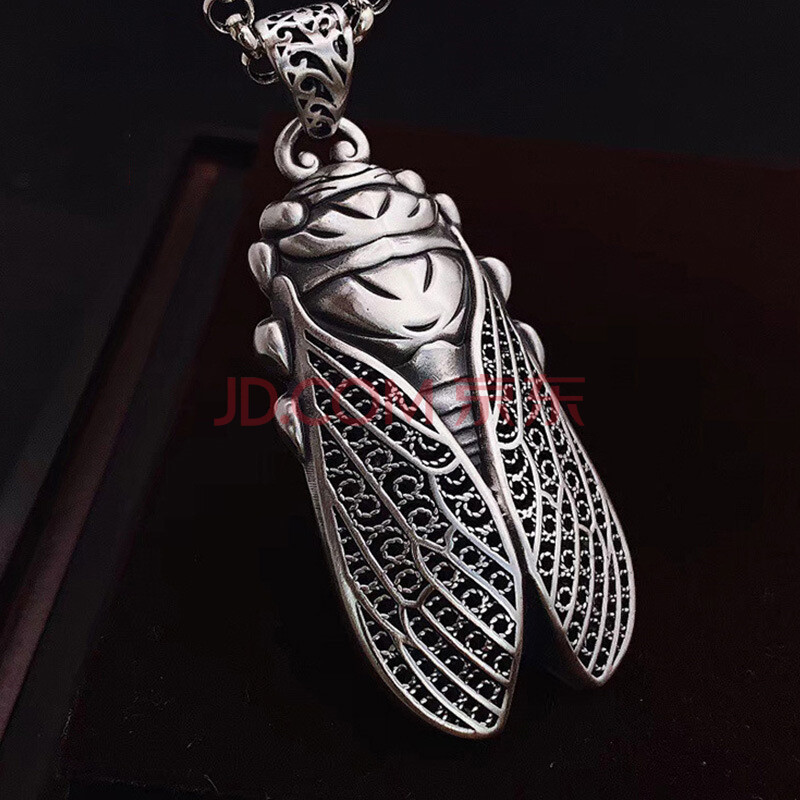
2022-07-10 16:00:41

2022-07-10 09:01:46
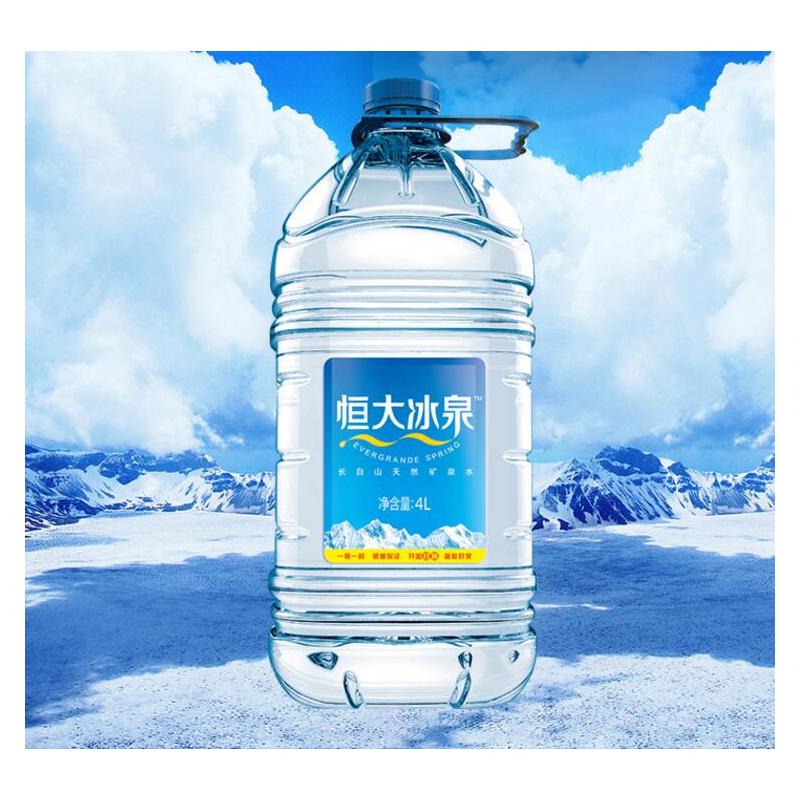
2022-07-08 18:00:25
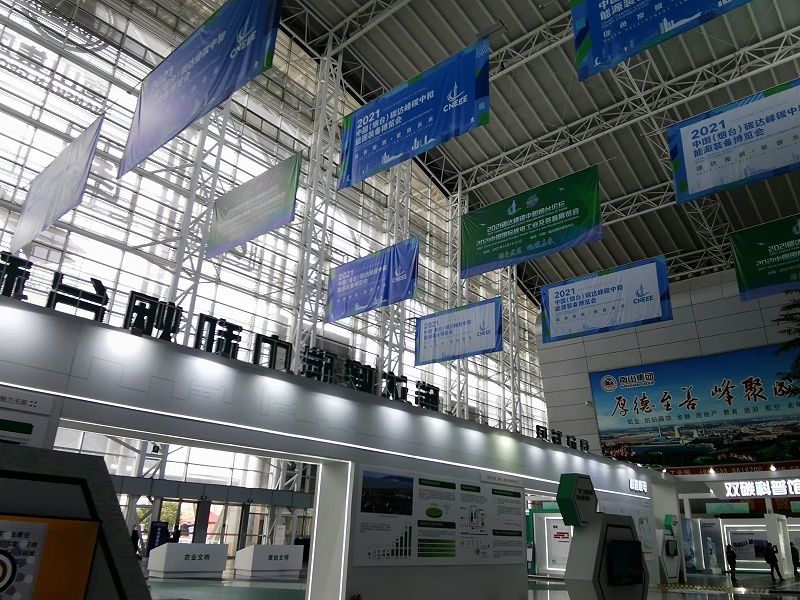
2022-07-08 10:02:06
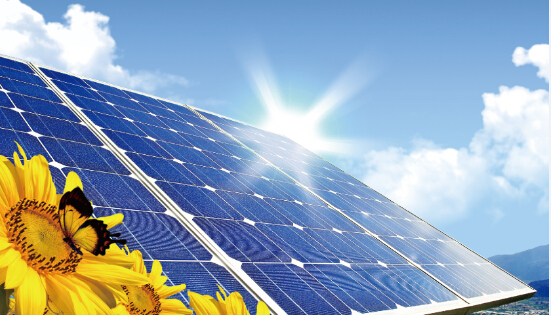
2022-07-07 17:01:55
热点排行
精彩文章
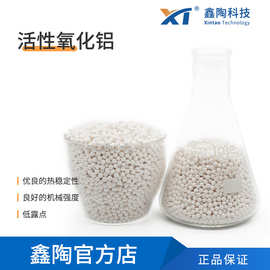
2022-07-11 10:09:03

2022-07-10 11:00:42
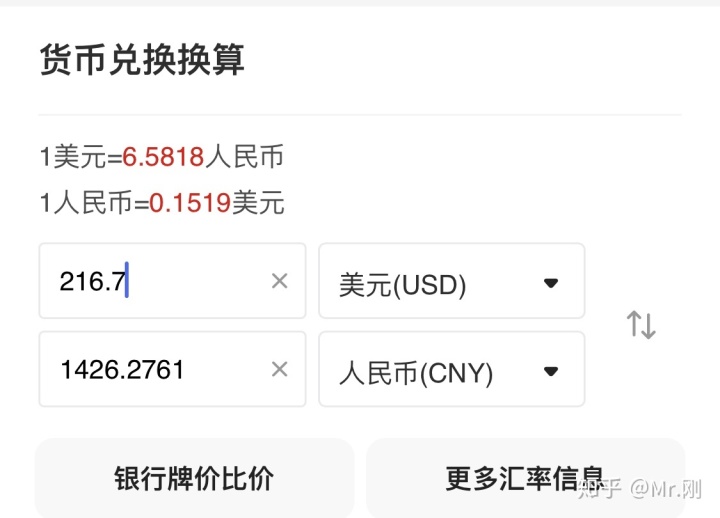
2022-07-09 18:01:03
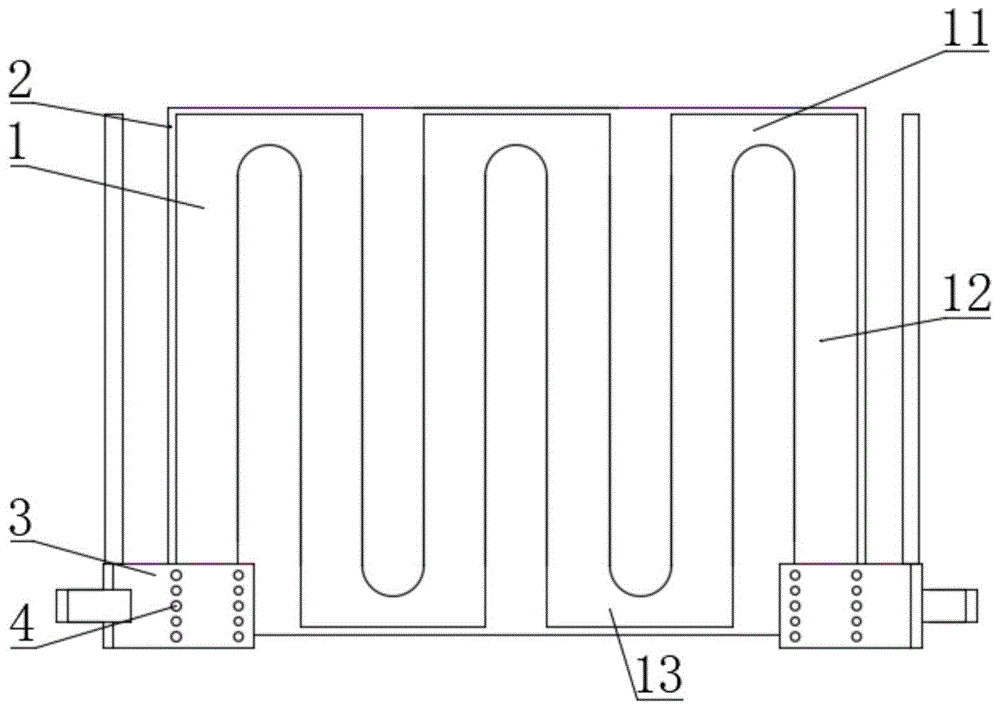
2022-07-09 11:00:46

2022-07-08 11:02:50
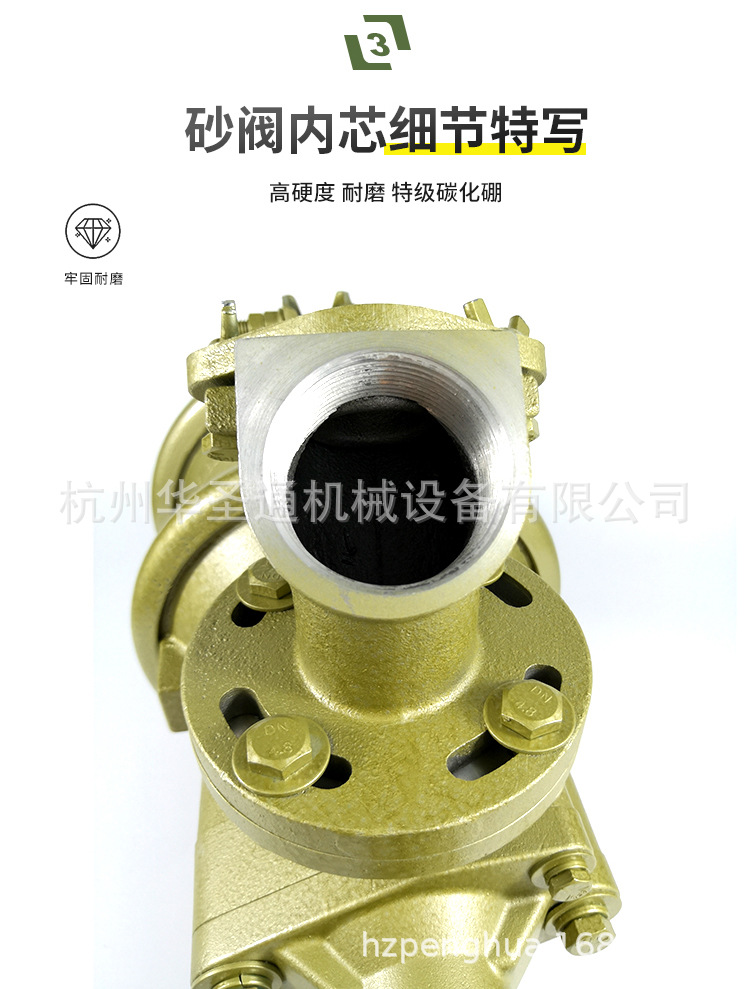
2022-07-08 09:01:36
热门推荐
